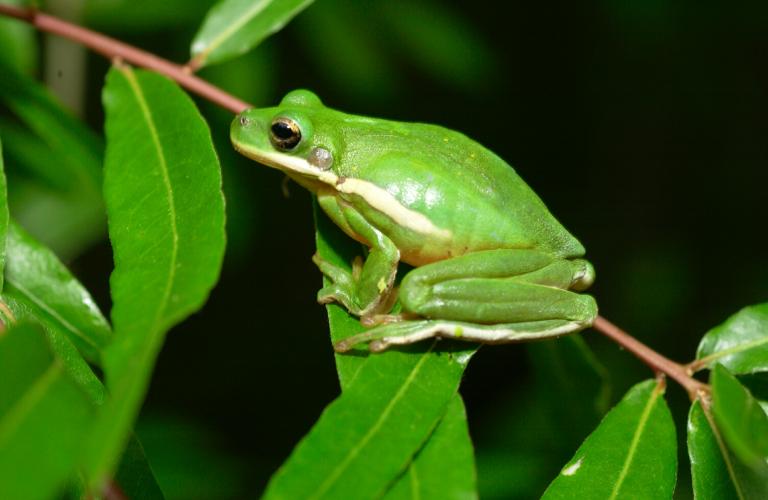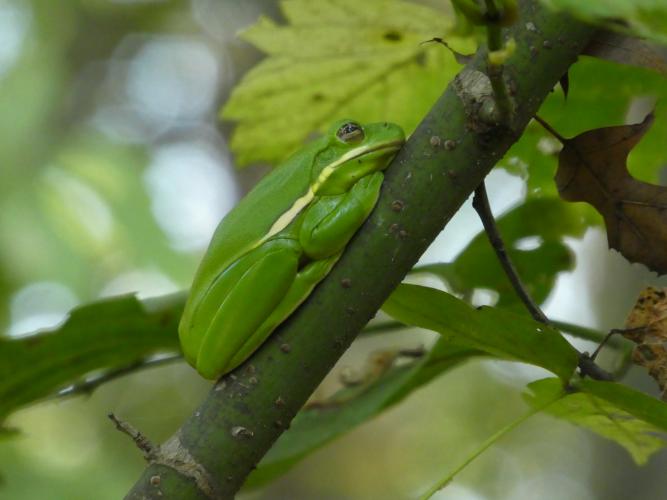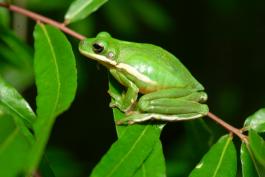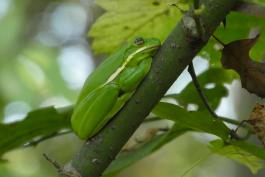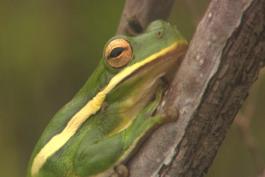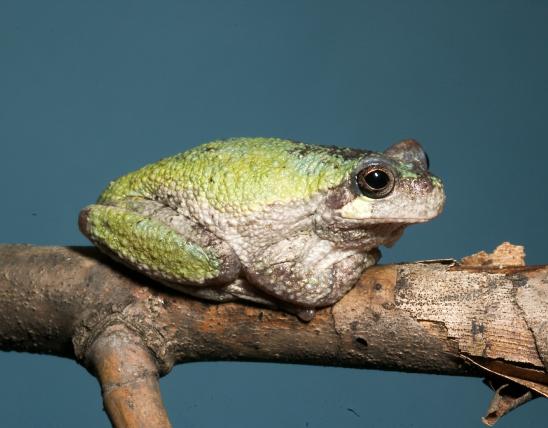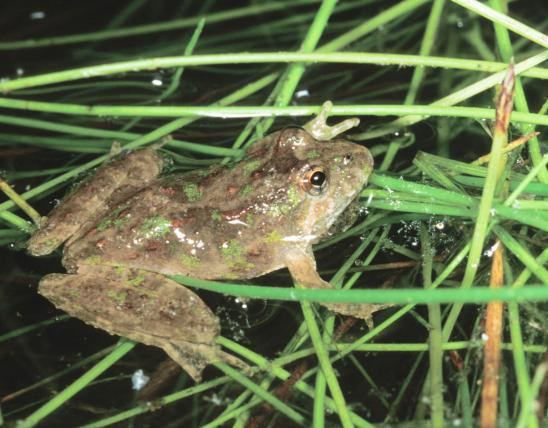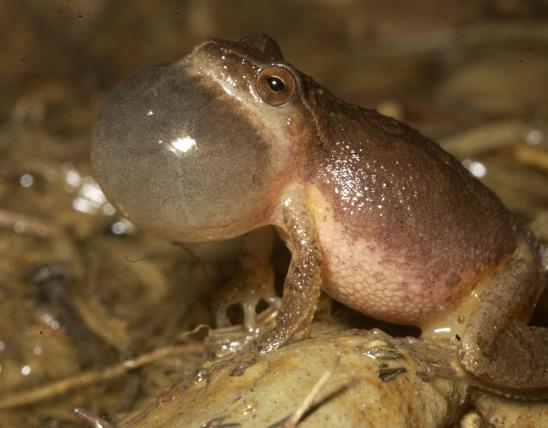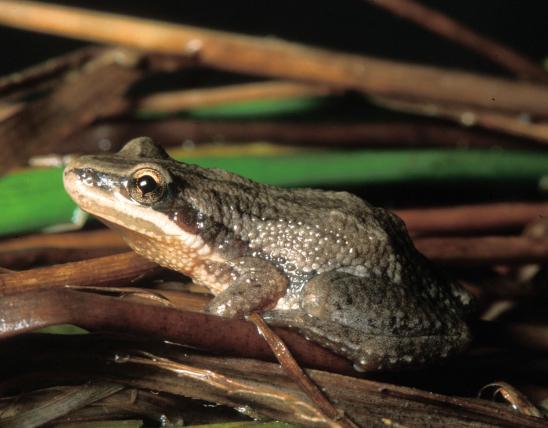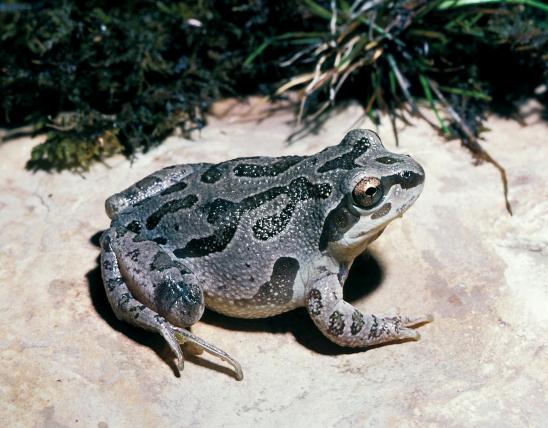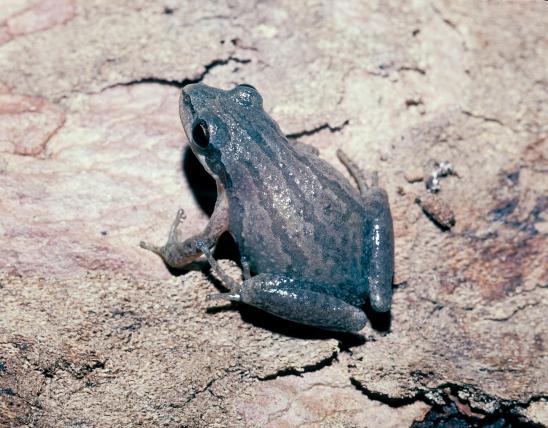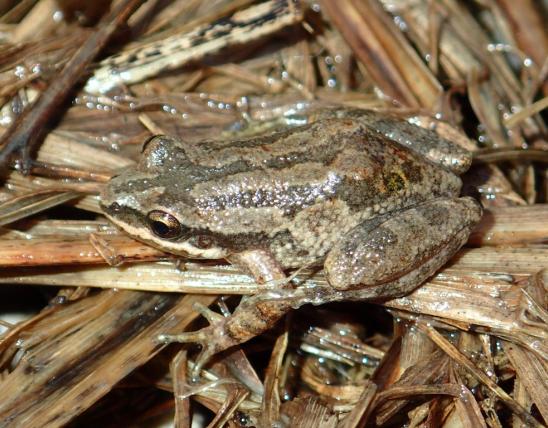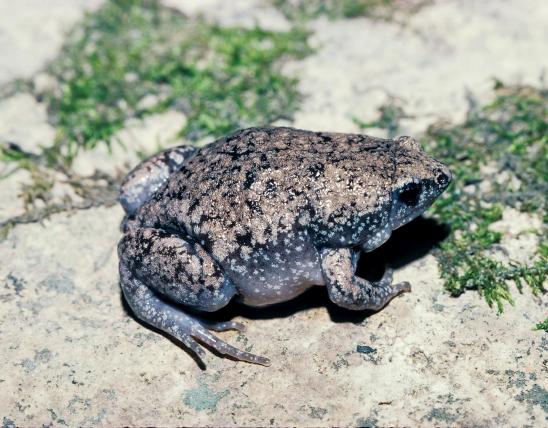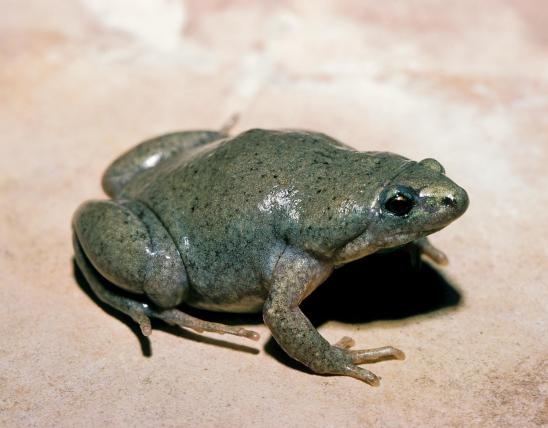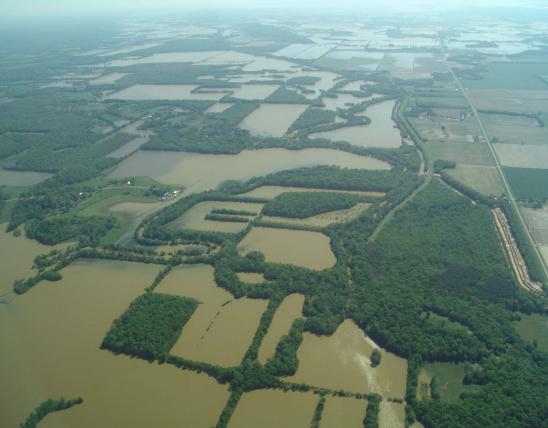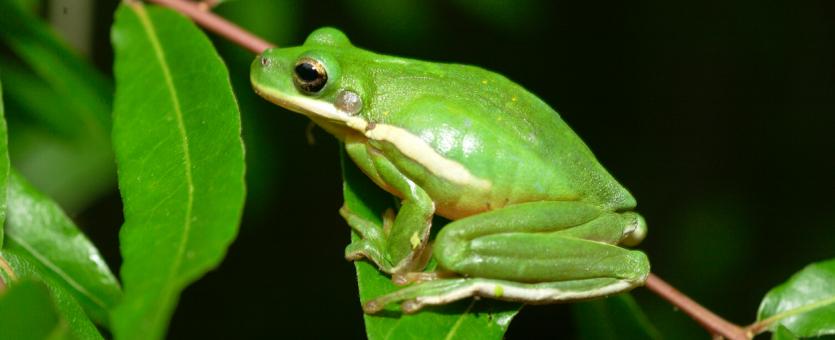
Green treefrogs range from light to dark green, but they are always green. A white or pale yellow stripe runs from the upper lip and down the side. In most of Missouri's green treefrogs, this stripe stops halfway down the side, seldom reaching the groin. The line may be outlined with a narrow black line. The inside of the hind legs have another white or pale yellow stripe. The back is smooth and may have a few small gold spots. The belly is white or yellow. Males, when calling at night, can be light green to yellow. Each finger and toe has a distinct, round adhesive pad.
The call of the male is a series of regular, nasal “guank, guank, guank” sounds, with a ringing or metallic character. Calling begins after dark. A chorus of green treefrogs resembles the sound of a distant flock of Canada geese.
Similar species: Missouri has two other treefrog species, both of which are quite similar to one another: the gray treefrog (H. versicolor) and Cope’s gray treefrog (H. chrysoscelis). Unlike the green treefrog, these are both gray and, counted together, are found statewide. Of the two, Cope’s gray treefrog is the one most likely to be found in southeast Missouri.
Adult length (snout to vent): 1¼ to 2¼ inches, occasionally to 2½ inches. Males are smaller than females.
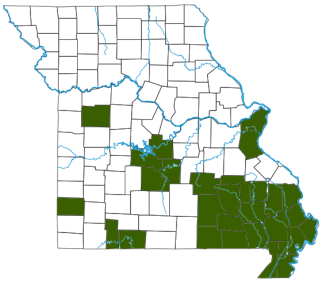
In Missouri, this species occurs mainly in the southeastern corner of the state, with several isolated populations elsewhere (including Greene, Taney, Jasper, Camden, and Johnson counties and the St. Louis metro area).
Habitat and Conservation
Green treefrogs generally live in vegetative areas near permanent bodies of water, especially cattail marshes, cypress swamps, pond banks, or river sloughs and oxbows. They are also occasionally found around buildings, on porches or decks, within gutters or pipes, and around other human structures.
Green treefrogs often spend the day resting among green vegetation such as long blades of cattails and grasses, and among leaves of shrubs, where they are camouflaged by their green color. Small, grassy fields that border a forested wetland are an ideal place to find large numbers of foraging green treefrogs in Missouri.
They mainly overwinter under logs, thick leaf litter, under tree bark, and within tree hole crevices. To reduce water loss during dry conditions, they apply a mucous layer produced by a skin gland to their head and body by wiping with their limbs.
This species is native to the last remaining cypress swamps, sloughs, and oxbow lakes of southeastern Missouri. Much of this species’ habitat has been destroyed. It is important to preserve large areas of remaining swamps, so this species, and many other animals and plants in the Bootheel swamp natural communities, can remain a part of our state’s natural wildlife heritage.
Food
On warm nights, green treefrogs climb among vegetation in search of insects, especially flies, moths, crickets, grasshoppers, ants, and beetles.
Status
The populations in Missouri’s Bootheel represent the northwestern limit of the green treefrog’s total range.
This species appears to be expanding its range north and west. There are also isolated records in several Missouri counties that are apparently due to accidental or intentional introductions.
In southeastern Missouri, much of this species’ preferred habitat has been destroyed due to swamp and marsh draining and channelization of streams. Still, this species remains quite common in Missouri and appears to be expanding its range northward. But large areas of remaining swamps should be preserved to preserve the species as a component of its native habitat in Missouri.
Life Cycle
Males chorus in the evenings from mid-April to early August. Egg laying usually occurs from late May into early July. Males call from bushes, trees, and other plants along the water's edge, or while sitting on floating plants. Females in Missouri probably lay 500–2,5000 eggs and might produce more than one clutch per season. Eggs hatch in 2–3 days, and the tadpoles transform into froglets about 5–7 weeks later, so between late June and early September. Green treefrogs can mature within 1 year. They are known to have a lifespan of up to 6 years.
Human Connections
Green treefrog choruses are a prominent part of the nighttime sounds of our cypress swamps.
This attractive frog is the official state amphibian of Georgia and Louisiana.
The green treefrog is often sold at pet stores. Note that males call quite loudly.
Ecosystem Connections
This frog eats insects, which helps to keep those populations in check. On the other hand, this frog becomes food for other predators such as birds, snakes, and mammals.
